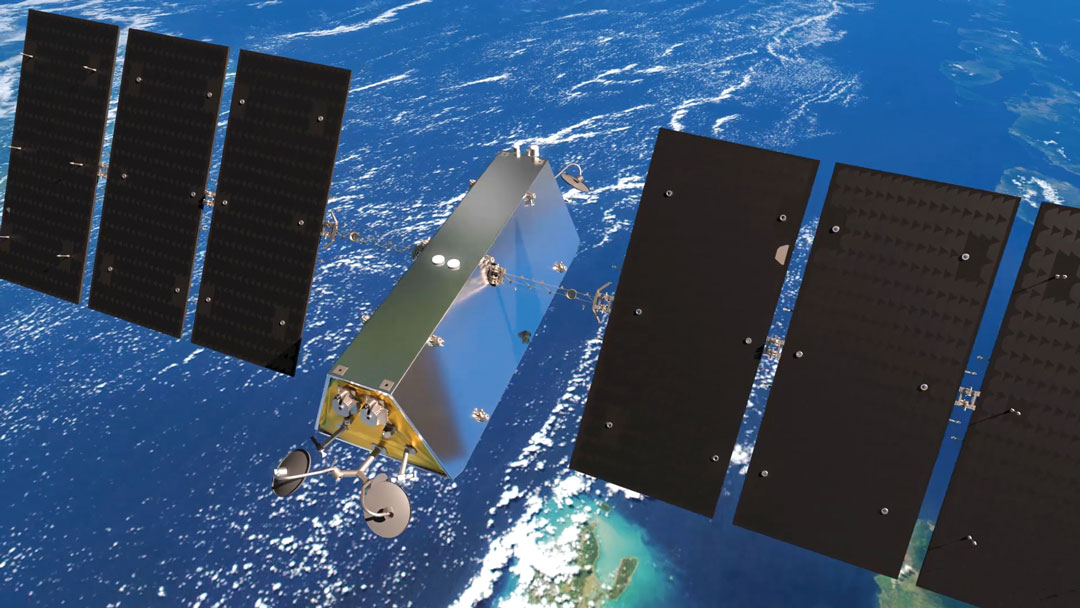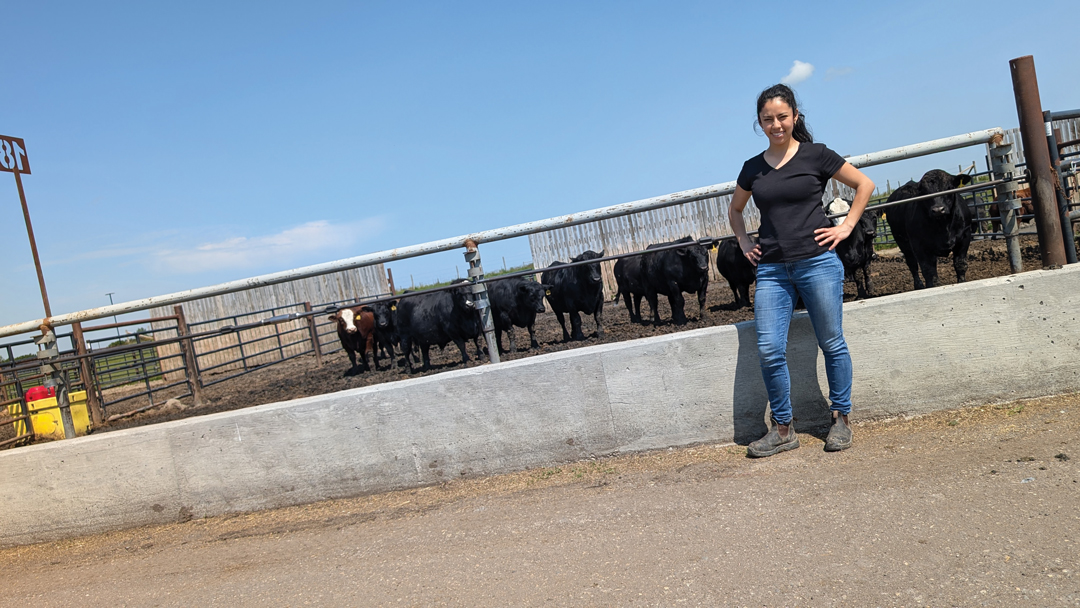RURAL INTERNET SPACE RACE
BY IAN DOIG • PHOTO COURTESY OF TELESAT
Canada is known the world over as a satellite system innovator. Though the most-hyped low Earth orbit (LEO) satellite array now in deployment is the American SpaceX Starlink, Canada’s own Telesat Lightspeed will be launched with rural and remote internet users in mind. Lightspeed’s “fibre-like connectivity” will be licensed to broadband internet providers such as Bell, Rogers and Telus that would in turn supply service to farm and rural customers. These will be 4G LTE or 5G networks.
The Satellite Canada Innovation Network (SatCan) is a not-for-profit organization that supports the development of the Canadian space sector. A non-political body, it works with government and industry to deliver programs, advocate for the betterment of the space sector and create public awareness of its value. It is also the administrator of the Optical SatCom Consortium (OSC). Comprised of science professionals and organizations, the OSC leads cutting-edge optical communications development, with the goal to advance broadband connectivity in the hinterlands.
Executive director Michelle Mendes said though SatCan views competition in the satellite communications arena as healthy, the nature of the Canadian marketplace limits homegrown initiatives. Satellite technology evolves quickly and certain funding mechanisms do not. But the nation excels in its research and development game, she said. “R&D-stage technology funding in Canada is second to none. A lot of companies come here to start. I like the fact that Canada is reinvesting in itself that way.”
She believes satellite systems will play a large role in the delivery of better farm internet. “The connectivity they’re going to be able to offer will be very easy to get used to, and the hunger for more is going to grow significantly.” She also said not enough outreach has been done to make farmers aware of what is possible with these systems from communications to crop imaging and even remote soil analysis.
The Lightspeed constellation will be comprised of 298 next-generation satellites supported by an advanced control network on the ground. Development and rollout of such complex systems takes time. The project has been in the works for several years, with its design phase now being completed and the manufacture of its fleet of satellites underway. Sophisticated ground infrastructure and software must be designed and built to control and communicate with the satellites, which themselves will incorporate complex subsystems. Tentatively scheduled for deployment sometime in 2023, the system will be ready for service immediately upon launch.
The federal government supports the project and views it as a means to close the internet service gap between urban centres and underserved rural regions. It initially contributed $600 million to build network capacity that will allow service providers to access the system at heavily discounted rates. “They’ll be able to use this capacity to connect rural and remote communities and areas, and that capacity will help to bridge the digital divide,” said Michele Beck, Telesat vice-president of North American sales. “It will be high-quality, low-latency, ultra-fast, very reliable connectivity.
“Lightspeed service will provide a great opportunity for mobile network operators to expand their footprints affordably and provide connectivity in some of the most rural areas of Canada,” said Beck.
She added Telesat now provides dedicated enterprise solutions with its GEO satellite fleet that may suit large farm operations. It will continue to provide these custom service solutions when Lightspeed is operational.
Helen Hambly is a University of Guelph professor and the project lead for the Regional and Rural Broadband Project, which supports research and innovation in rural internet service. Hambly said Canada does not yet have a testing methodology to ensure next-generation satcom services such as Telesat Lightspeed will facilitate better internet connectivity in areas of greatest need and demand. This is important, she said, as it is well-known the quality of service can vary. “Rural users of fixed wireless, satellite and mobile wireless find reliable service an issue—the persistent lack of getting service at the ‘up to’ speeds or being served well below the advertised quality of service promised by providers.”
It is Lightspeed’s indirect relationship with the customer that, makes the implications of its launch an unknown for farmers. “The big question is, how is this satellite constellation that the Canadian taxpayers are investing in going to benefit us?” she said. She grants it will give the nation’s fixed and mobile network operators an opportunity to improve service and connectivity. The system may also benefit farmers through its use by enterprise operations such as meteorological and emergency services and precision agriculture platforms.
As a possible limitation of satellite systems, Hambly cited a U.S. study that suggests Starlink’s service quality may be compromised as more users sign on. “There’s not yet a constellation of satellite service that is immune from quality-of-service issues.” Affordability may also prove problematic for rural customers, though Starlink appears to be competitive with fixed wireless, she said. Service risks are also simply inherent with satellite networks, she added, given their complex data systems and the real danger of being hit by space debris.
As rural internet users are painfully aware, there is no magic wand for better service. Hambly believes satellite service will not replace land-based options, which will continue to be built out. “With regional and rural broadband, service has to be very regionally focused in terms of what works for that particular geography,” she said. How satellite service will shape the offerings of telecom service providers, including satellite companies themselves, will not be known for some time. “We still have to see what’s going to be on offer.”
Hambly said the public money being invested in Lightspeed is being used to refine the technology and develop proprietary technologies that Canada can sell to the rest of the world. “That’s a good use of taxpayer dollars, to make sure we keep our foothold as a satellite nation, as an early innovator and early market player in satcom.”
Such technological innovation has been necessary to remedy the difficulties service providers have experienced while incorporating satellite service into their networks. Such problems have included lag time, slow speeds and poor signal quality. Beck explained geostationary satellites operate 35,000 kilometres from Earth, which creates a half-second time lag as signals travel to and from. The networking problems this causes vanish when multi-satellite LEO systems that orbit at 1,000 to 1,300 km are employed. Also, an inherent strength, these constellations are resilient when failures occur, rerouting signals within the array. “It’s a game changer,” said Beck.
Telesat bills Lightspeed as “the most innovative, cutting-edge broadband satellite network ever conceived.” Its technical advances include space-based data processing that routes traffic with the aid of optical intersatellite links. The system’s digital antennae identify fluctuations in demand as they occur across the globe. “And then we combine all of that with artificial intelligence, which allows us to learn where the demand is, and then adapt to it to ensure the capacity gets delivered where it’s needed,” said Beck. The system will be a “plug-and-play” option service providers can incorporate in their networks, she said.
“In Canada, approximately two million households don’t have access to affordable and reliable high-speed internet,” said Beck. “Businesses operate in rural and remote regions of Canada as well. We see Lightspeed as being a key service and solution for connecting and driving economic growth across Canada, but also around the world.”







Comments